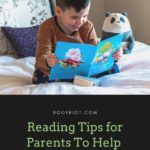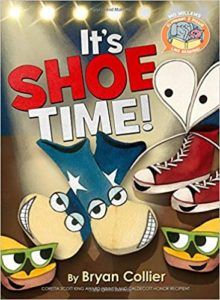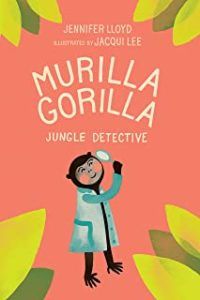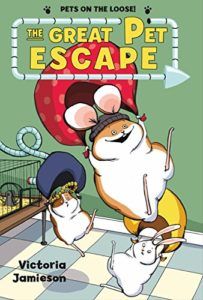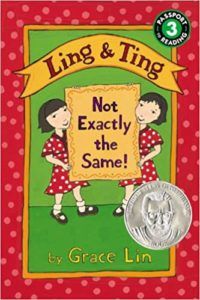How do people learn to read?
Here is a very simplified explanation of how most people learn to read. When people are learning to read in English, they need to be able to decode words, and they need to be able to memorize sight words. Words that can be decoded follow “the rules”—the letter C says /k/ as in cat, the letter A says /a/ as in apple—and the sounds blend together to make a recognized word. Sight words break “the rules,” such as the word “the.” You can’t break the word down into little sounds—you have to memorize it. Then once you figure that out, “the rules” get more complicated—silent E at the end changes the vowel sounds in words. The letter G makes soft and hard sounds. K and P start getting added to the front of words AND NO ONE REALLY UNDERSTANDS WHY. When I was teaching first grade, I spent a lot of time saying “Sometimes these rules don’t make sense. The only thing we can do is keep practicing.” That is the heart of it—practice. Students need regular repeated reading in order to gain reading fluency. Think of it as weight lifting for growing minds. You wouldn’t lift a weight once and expect to have larger muscles! You have to lift over and over. The same applies to practicing the skill of reading.
Reading Tips for Parents
To get a beginning reader confident enough to repeat a text, there are several reading strategies for parents that can be helpful.
Tap it Out
This is a common phrasing that is used in the phonics program Fundations. For simple words that follow “the rules” I mentioned above, have readers tap their thumb and finger together for each sound, then run their thumb and finger together to blend the sounds into a word. For example, for the word “cat,” readers would tap the sounds /c/ /a/ /t/, then let the sounds run together to hear the word “cat.” This phonics skill is the basis of beginning reading instruction.
Use the Pictures
Encourage beginning readers to see if the picture helps them understand the words. The context clues in the illustrations can help readers by reinforcing the words they’re decoding. This is why comics are so amazing for building reading confidence.
Chunk It
If a word has more than one syllable, try covering part of the word and breaking it into smaller pieces. If the word “backyard” appears in a text, use a finger or strip of paper to cover “yard” while the reader decodes “back.” Once that’s solidified, you can move to the second part.
Read for Meaning
Readers understand pretty quickly that we read for a reason, and that words strung together in sentences mean something. A helpful question to ask a reader is “Does that make sense?” This is important to ask whether or not the reader has successfully read the sentence, so the reader is practicing self-checking their work.
Let the Reader Struggle
It’s important to resist the urge to fill in every silence that occurs as readers haltingly work their way through a new text. The struggle is building that muscle. Once they’ve worked their way through a sentence, stopping and using all their strategies, encourage them to “go back and read it smooth.” This helps make the connection between the work of figuring out the words and the meaning that comes from the words.
Pick Your Battles
In direct contrast to the last tip, there are going to be times when you just give the reader the word they’re stuck on. This is where you really need to know the reader you’re working with and feel out the situation. Learning to read clicks like the snap of a finger for some people. It’s an infuriating uphill climb for others. When all else fails, sometimes I will take the simple text from a reader on the verge of a meltdown and read it to them. It still counts. It’s still reading instruction. The bond between the reading coach (teacher or parent) and the person trying to learn to read is more important than any program or schooling situation.
Just Read
At the end of the day, teaching people to read is something that teachers spend years studying. Unless you are a certified teacher, using reading strategies is going to feel difficult and awkward at times. When tension is rising or anyone at the table is starting to fall apart, step away. Take a break. Even as a teacher and librarian who holds reading as a high value, there are still nights where it’s clear my children do not need a reading lesson. I pull them into my lap and I read something to them. Completing homework assignments is not my ultimate goal; it’s more important to me that my kids have positive associations with reading.
Books to Start With
Looking for some books to get started practicing these reading tips for parents? Try some of the great beginning reader series below! You can also find some great read-aloud books here.
Ed and Kip by Kay Chorao
Great for the most beginning of readers, these two sweet elephants are engaging and the text simple.
It’s Shoe Time by Bryan Collier
Goofy and great, It’s Shoe Time is introduced by the classic characters Elephant and Piggie. Speech bubbles help beginning readers place the words in context.
Katie Woo, Super Scout by Fran Manushkin illustrated by Tammie Lyon
Katie Woo is silly and sassy, and part of a prolific series that can keep readers occupied for dozens and dozens of installments.
Murilla Gorilla: Jungle Detective by Jennifer Lloyd (Writer) and Jacqui Lee (Illustrator)
A bumbling detective with an endearing charm, and lots more adventures to draw beginning readers along.
The Great Pet Escape by Victoria Jamieson
As readers become more comfortable using their strategies, I highly suggest this graphic novel. Best for readers who are already very confident with the basics, these excellent characters and their exciting adventures are a hit.
Ling & Ting: Not Exactly the Same by Grace Lin
Identical twins Ling and Ting may LOOK exactly the same, but they don’t want you to forget that people can be very different. Once a beginning reader meets these charming characters, they’ll have several more books to enjoy! Hopefully this is enough to help you get started in guiding a beginning reader in your life. More than anything, have patience with yourself. You’re doing a great job.
